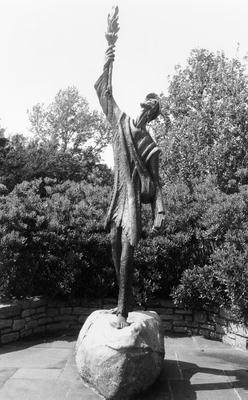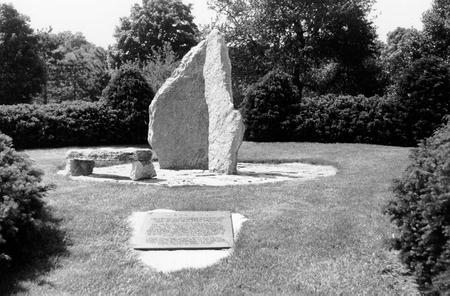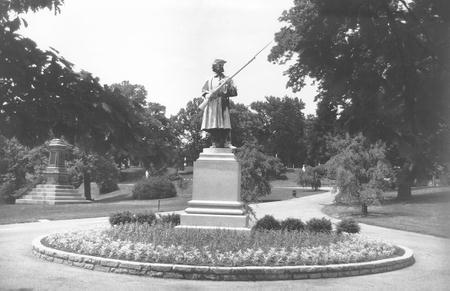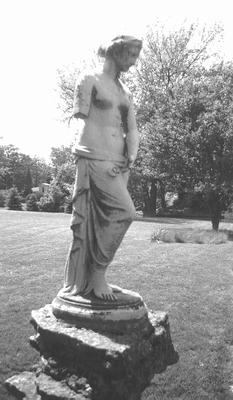


*During your cemetery visit, ask your class to sketch some of the symobos and designs found on monuments. What ate the most common symbols, and what could each represent? (Doves-promise, snakes-eternity, trumpets-victory, willow trees-mourning, flowers-beauty, anchors-hope, and butterflies-freedom.
Next, have your students preserve the history, art and tradition they have uncovered on your cemetery visit by creating a gravestone rubbing. (Be sure to get permission from the cemetery authorities first.)
(*From Learning89, October.)

How to Make Tombstone Rubbings
It is a wonderful way to learn about history.
There are some basic rules you should follow and some tools you need to get started.
|
1. Many cemeteries are private property. Be sure and ask before you start rubbing tombstones. Trespassing fines are not cheap. Many do not understand what rubbing is or have ever heard of it. |
Tools
|
1. A soft brush. The kind you might use to polish your shoes work well. A tooth brush is also a good thing to bring. |
Method
|
Once you have found a nice tombstone you need to make sure it is clean. Use the soft brush and remove dirt and debris from the surface. Be gentle, and respectful, if the it looks as if you might scratch the tombstone then move on. |
Remember the respect you show now will ensure that tombstone rubbing will always
be looked at as a way to preserve history and not as vandalism.
More Notes and Help!
Some more suggestions and addtions?
1. In the spray bottle, the specification that it should contain only water
and not detergent or chemicals of any kind would eliminate the horrible
possibility that the Ivory [or other] soap mixture will do damage and
further erode the stone's material. Carry a mirror for better lighting contrast.
Rubbing is not always neccessary to capture the image and there are some
newer techniques such as dabbing and foiling. Better that this is left on the stone.
If using this with a classrom of students, take a box
of baby wipes with you for hand clean up. Also
make sure you take a bag to throw the waste in.
Rubbings is from Pat Dupes-Matsumoto pdupes@pacbell.net
Other Art Activities

ARTIST(S)
Name: Koepnick, Robert C.
Birth: 1907
Death:
Role: Sculptor
TITLE(S)
Johnny Appleseed
John Chapman
DATES
Creation: 1968
Installation: unknown
Dedication: 1968
DESCRIPTION
An elongated male figure raising a handful of branches to the sky with his
proper right hand. In his proper left hand he carries a book at his side. His
head looks up towards the sky and he is standing on a rock.
Site: Section 134

ARTIST(S)
Name: McMesky, Robert
Birth:
Death:
Role: Sculptor
TITLE(S)
Megalith
DATES
Creation: 1970
Installation: unknown
Dedication: 1970
DESCRIPTION
Two slabs of Ohio limestone are set in the ground. The edge of each slab
has been engraved with images of human and animal life.
Site: Section 135

ARTIST(S)
Name: Rogers, Randolph
Birth: 1825
Death: 1892
Role: Sculptor
TITLE(S)
The Sentinel
Soldier of the Line
DATES Site: Section 20
Creation: 1864
Installation: unknown
Dedication: unknown
DESCRIPTION Site:
A Union Army Sentinel stands in uniform holding a rifle with the bayonet in
the air. His head is turned to the proper left.
Site: Section 21



Not just for teacher series pages
| Language Arts |
Science |
My Favorite Links |
Social Studies |